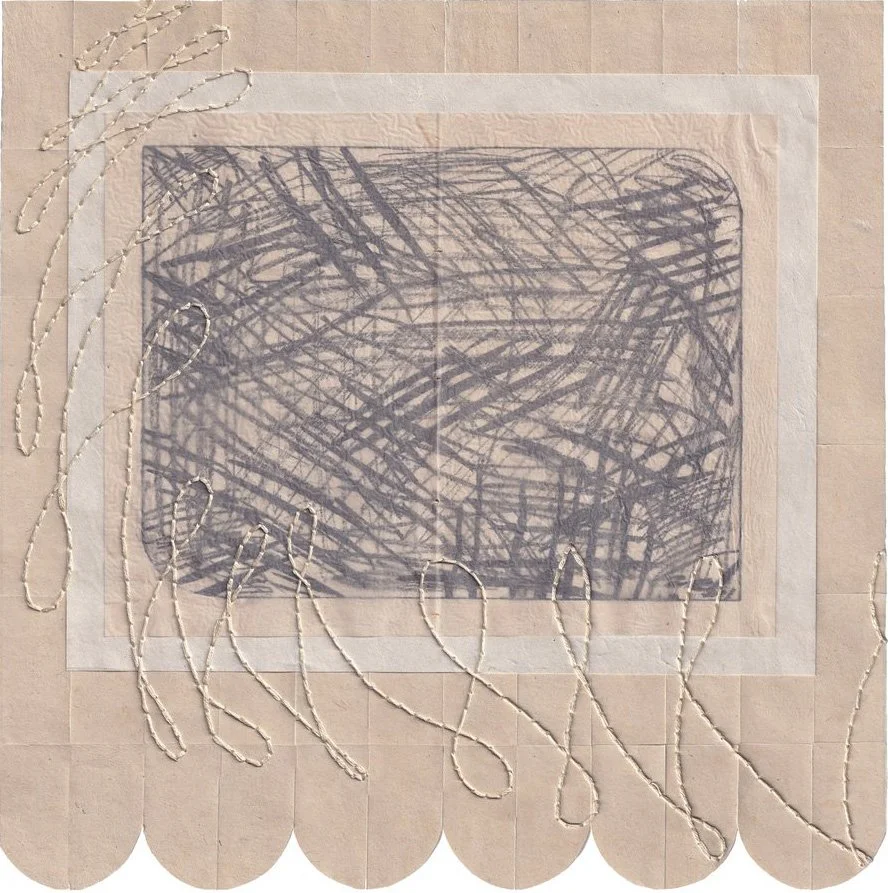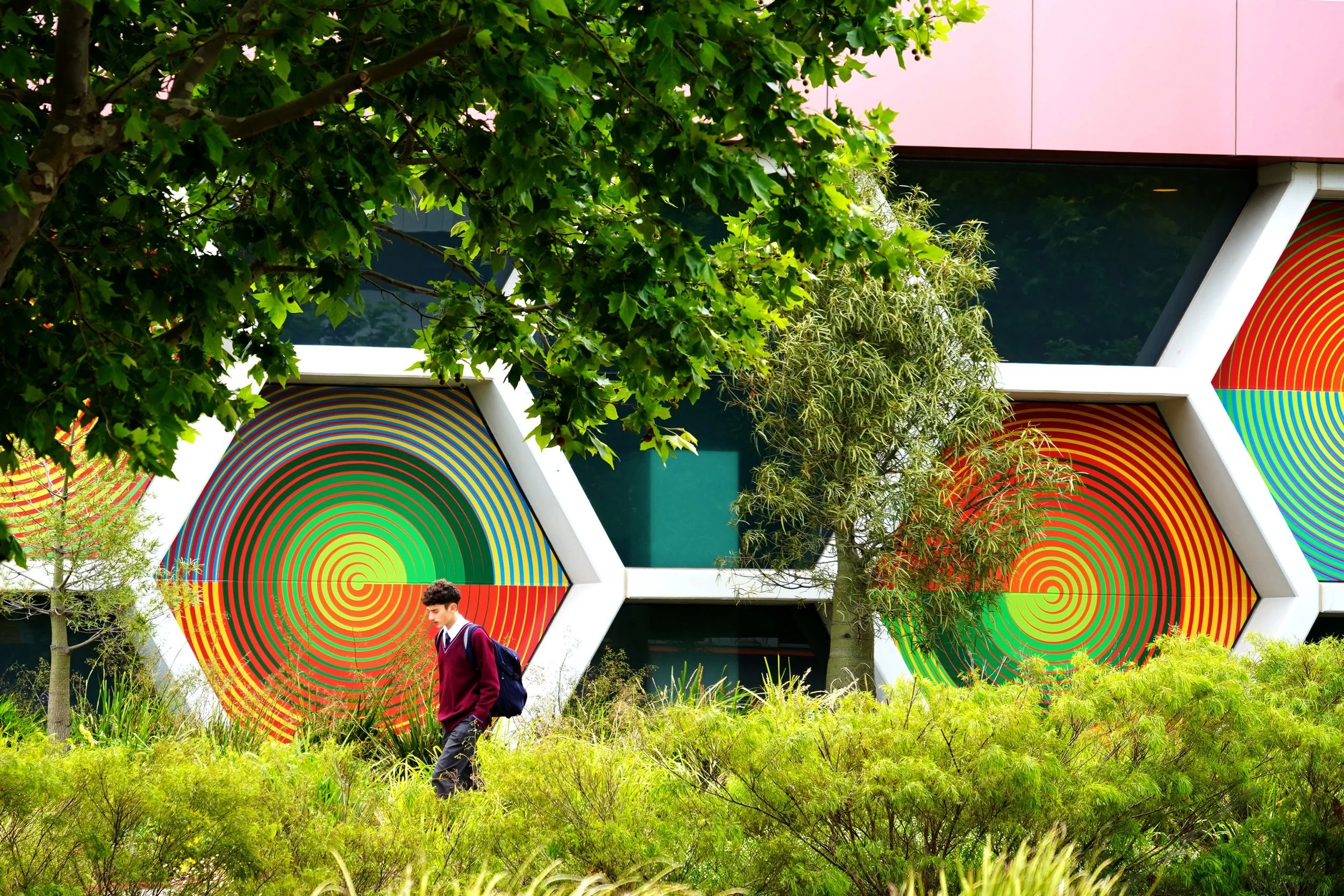10 Questions with Kun Zhao
Kun Zhao is a visual artist and educator whose practice spans painting, drawing, printmaking, and material expression. With a solid academic background and extensive teaching experience, Kun bridges traditional techniques with contemporary themes.
Kun holds an M.F.A. from the School of the Art Institute of Chicago, concentrating on Printmaking and Material Expression. Before this, Kun completed an M.A. in Printmaking and a B.A. in Art Education. These formative years laid the foundation for a career dedicated to exploring and expanding artistic practices.
As an educator, Kun has taught extensively, most notably as a Tenure-Track Assistant Professor and Director of Fine Art Foundation Courses at Zhuhai College of Jilin University in China, where Kun led curriculum development in Drawing, Painting, 2D Design, and Material Expression. Additionally, Kun has contributed to workshops on Chinese Calligraphy and Printmaking in various Chicago high schools, promoting cross-cultural understanding.
Kun's artwork has been exhibited nationally and internationally. Recent exhibitions include the "Chinese Culture Visual Art Exhibition" at Hinsdale Library, the "Emerging Artist Program" at 4C Gallery in San Gabriel, and a show at Color Gallery in Chicago. These exhibitions reflect Kun's evolving artistic voice, with works like the "Rose Window" series critiquing consumer culture and environmental impact through pointillism and color theory.
Kun has also participated in significant educational collaborations, such as the China-US Design and Cultural Exchange Studio Program, which fostered cross-cultural artistic dialogue and collaboration. Awards and grants received include first prizes in watercolor and etching at the Arts Exhibition in Hebei Province and multiple Guangdong Provincial Curriculum Reform for Higher Education Grants for innovative course design.
Kun continues to push the boundaries of artistic practice and education, contributing to both the academic and artistic communities.
Kun Zhao - Portrait
Rose Window | Project Description
In Kun Zhao's Rose Window series, the artist explores the intersection of environmental concern and artistic expression, merging low materials with high art. This body of work, created through collage for the first time, reflects Kun's deep engagement with the aesthetics of daily life and waste. Each piece, taking approximately six months to complete, re-purposes discarded plastic packaging from everyday items such as snacks, tissues, and drink labels. These materials serve both as a source of inspiration and as a commentary on consumerism.
The vibrant colors and dense dots evoke the effect of light spots, incorporating the pointillism technique from Impressionism to create rich visual textures and intricate color layering. The Rose Window, a symbol with deep religious significance, plays a central role in this series. Historically, religious authority restricted personal creativity and freedom, but after the Renaissance, secular life ushered in a new era of individual expression. However, since the 1950s, the rise of consumer culture and mass production has imposed a new constraint—environmental degradation and the proliferation of commercial waste.
Through this series, Kun Zhao reflects on the impact of consumerism on the environment, ecology, and the human spirit. The Rose Window form is used to articulate the historical and ongoing transformations in consumer behavior while highlighting the pressing environmental issues that stem from contemporary consumption. Kun's work seeks to provoke thought about the consequences of mass production and its influence on both the natural world and cultural values.
Rose Window 1, Plastic Packaging, 75x75 in, 2021 © Kun Zhao
INTERVIEW
Please introduce yourself to our readers. Who are you, and when did your interest in art first begin?
Hello, I'm Kun Zhao, an artist and educator with 15 years of teaching experience—five years at the high school level and a decade in college, specializing in painting, drawing, and visual design. My educational background includes a B.A. in Art Education, an M.A. in Printmaking, and an M.F.A. in Studio Art from the School of the Art Institute of Chicago.
Growing up in China, I was deeply influenced by my father, who is a skilled art teacher in Chinese painting and calligraphy. He introduced me to the world of art at a young age, sparking a passion that has shaped my life and career ever since.
How did your academic journey from China to the School of the Art Institute of Chicago influence your artistic development? And how have your experiences as an artist and educator shaped your approach to art?
My experiences as both an artist and educator have profoundly shaped my approach to art. Over the years, the accumulation of artistic practice has refined my aesthetic sensibility, helping me develop a strong preference for composition and color theory. For instance, in my Rose Window piece, I didn't simply replicate the original pattern's colors. Instead, I adjusted the brightness, purity, and hue based on color theory principles, making the work visually striking. To further enhance its appeal, I incorporated techniques inspired by impressionist pointillism, giving the piece an artistic cohesiveness rather than a collage-like appearance.
As an educator, I find immense joy in teaching and the opportunity to interact with a wide range of students. Teaching, to me, is a reciprocal process of learning. While I impart my knowledge and skills, I often find myself inspired by my students' fresh perspectives. For instance, during a material expression project, one student's innovative use of discarded materials opened my eyes to new possibilities for incorporating waste into my own artwork. This exchange of ideas not only enriches their learning but also expands my creative practice, allowing me to grow alongside them.
Rose Window (detail) © Kun Zhao
Rose Window (detail) © Kun Zhao
Your work spans various mediums, including painting, drawing, and printmaking. How do you choose which medium to work with for each project?
In my creative process, the choice of medium typically falls into two categories. The first involves using familiar tools and materials, such as prints, sketches, or painting techniques. These are more straightforward, like my etching Life Pregnancy.
The second approach is more experimental and stems from my reflections on life, society, and culture. In these cases, I focus on finding the most appropriate materials, techniques, and presentation methods through experimentation. For example, my Rose Window and Landscape series, both of which incorporate plastic waste, are the results of this exploratory process.
Can you describe your creative process when starting a new piece? Do you have any routines or rituals?
My creative process usually begins with inspiration, which can come from two different sources. Sometimes, it's purely aesthetic—whether it's the beauty of a flower, a landscape, or a person who captures my attention. In those moments, my instinct is to immediately start creating, capturing that feeling of beauty and translating it into art.
Other times, my work stems from deeper thoughts, often sparked by books I've read, observations of daily life, or reflections on societal issues. When these ideas surface, I feel a need to express them through my work. This leads me into a more experimental phase, where I explore different materials and methods, continuously deepening and refining my thoughts. It's a process of taking something abstract or complex and making it clearer and more tangible through the act ofcreation.
Rose Window (detail) © Kun Zhao
Your "Rose Window" series critiques consumer culture and environmental issues. What inspired you to address these themes, and how do you approach them in your work?
In my Rose Window series, I draw inspiration from the pervasive presence of plastic waste in both China and the United States. The widespread reliance on plastic for its convenience and affordability made me reflect deeply on consumer habits and their environmental impact.
This series embodies my concerns about the immense resources consumed to produce plastic and the vast amounts of waste it generates. I aim to illustrate how this plastic waste is damaging our environment, and what the long-term consequences could be, even if they don't feel immediately pressing.
In the artwork, the countless dots represent individuals, while the vibrant colors reflect the allure of consumer goods. The various packaging from different brands symbolizes today's consumption mindset. By repurposing these materials, I hope to provoke thought about waste management and inspire a more conscious approach to consumption.
What do you think is the role of art and artists in addressing such themes? Do you believe art can have a long-lasting impact on raising awareness of such issues?
Artists offer a unique perspective that helps people see and reflect on important issues in new ways. While art itself cannot solve these problems, it plays a crucial role in raising awareness and sparking conversations. For meaningful change to happen, artists need to collaborate with individuals and communities across various fields to address and tackle these challenges together. Art can indeed have a lasting impact by engaging and inspiring people to think differently and act towards solutions.
What message or experience do you hope viewers take away from your art?
Through my art, I aim to raise awareness about environmental pollution and the importance of proper plastic waste disposal. I hope to inspire viewers to rethink their consumption habits and work towards a more sustainable future.
My work conveys that waste can be transformed into art, reflecting the idea that we should not give up on ourselves. We must diligently pursue change and improvement. Just as many small dots come together to form a larger artwork, small, consistent efforts can lead to significant and meaningful outcomes over time.
Rose Window (detail) © Kun Zhao
Rose Window (detail) © Kun Zhao
Your work has been exhibited internationally. How does engaging with audiences from different cultures impact the way you create?
Engaging with audiences from different cultures profoundly influences my creative process. Exposure to diverse perspectives and cultural contexts enriches my understanding of global issues, including those related to environmental concerns and consumerism.
Interactions with varied audiences help me see how universal themes, like waste and sustainability, are perceived differently around the world. This broadens my approach, encouraging me to incorporate a range of cultural elements and viewpoints into my work. It also challenges me to think about how my art can resonate with and address the concerns of diverse communities, ultimately making my message more inclusive and impactful.
Lastly, what can we expect to see from you in the near future, both in your artistic practice and your role as an educator?
In the near future, I am excited about new developments in both my art practice and educational work. While I am pleased with the progress of the "Rose Window" series, I see it as just the beginning and recognize there is much more to explore and refine.
Additionally, I plan to experiment with using plastic packaging materials to create pointillism effects and may explore printmaking. These new ventures will help me push the boundaries of my creative work while I continue to contribute to art education, inspiring and nurturing creativity in my students.
Artist’s Talk
Al-Tiba9 Interviews is a promotional platform for artists to articulate their vision and engage them with our diverse readership through a published art dialogue. The artists are interviewed by Mohamed Benhadj, the founder & curator of Al-Tiba9, to highlight their artistic careers and introduce them to the international contemporary art scene across our vast network of museums, galleries, art professionals, art dealers, collectors, and art lovers across the globe.





















